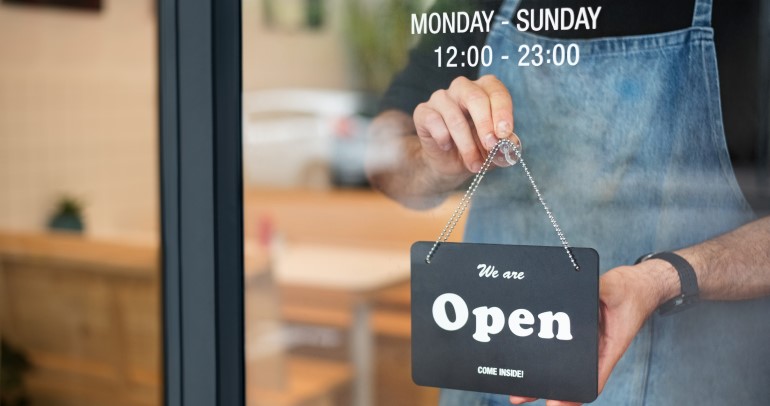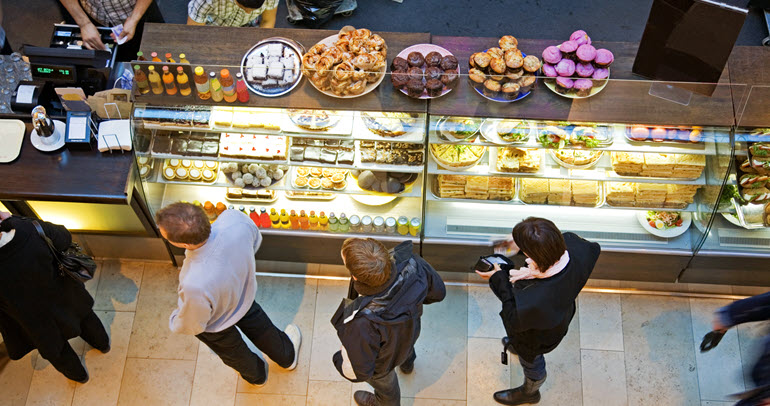
In the first article of this series, we examined how COVID-19 is changing consumer shopping behavior. In this article, we examine which brick-and-mortar store types are most likely to survive—and potentially come back stronger—based on how they are weathering the pandemic and what they are doing to shift the retail paradigm.
Everything starts with consumers and how they react. Consumer spending represents 73% of GDP so the rate of consumer savings will dictate if and how quickly brick-and-mortar stores return to health. Consumers traditionally buckle down and save more in times of crisis. If we become consummate savers while sheltering-in-place and carry those behaviors forward, this will mean additional pain for retailers. And depending on which news source you follow, it could be anywhere from three months to two years before we return to pre-COVID-19 life. No matter what the timeline ends up being, the ability (or inability) to congregate again will continue to complicate retail shopping.
Recovery will also depend on how many retailers—large and small—are able to take advantage of the federally funded CARES Act loans. This is especially true for forgivable loans that were granted to businesses that kept 90% of their payroll intact throughout the pandemic.
What Will Retail Look Like Post-COVID-19?
Retailers with a strong online presence are best positioned for a big comeback. According to Business of Home Retail Watch, “any business that does not have its e-com act together is going to pay a harsh penalty.” The author goes on to state that those establishments that have taken care of their employees, sent out appropriate messaging, and have solid cash statements are the ones that will prevail.
For retailers to come back strong, consumers will need to react like they did after 9/11. In the months following the terrorist attacks, we experienced one of the biggest spending sprees in decades thanks to a dramatic drop in interest rates engineered by the Federal Reserve as well as tax cuts pushed earlier in the year by the Bush administration. To get out of the current crisis, it will not be good for retailers if consumers go down the consummate savings route. With a significant amount of uncertainty around what the next stage will look like and how long it will last, the kind of comeback we saw after 9/11 is less likely.
It will also depend on the type of business… large department stores, big box retail, or mom-and-pop boutiques.
Large department stores have been on the decline for years as they have failed to meet shoppers’ needs and watched customers shift their spending to brand name stores, big box retail, mom-and-pop boutiques, and online shopping. Although department stores have been working hard to win back the hearts and minds of shoppers, some have been forced to close their doors, including Macy’s who closed 125 stores just three weeks prior to the CDC announcing the spread of COVID-19 within the US. The pandemic has hit already struggling department stores hard and the situation today is dire for many of them.
What about mom-and-pop boutiques? The National Retail Federation reports that small businesses are stepping up every day, moving in-store SKUs to online stores, working with other small businesses to package up products and services for pick-up and delivery, and re-purposing employee labor to deliver meals to healthcare workers. Small businesses have re-invented themselves overnight and are working hard to keep money coming in the door. This is working for some—but others have found it impossible to stay open.
Who Will Come Back Strong?
Timing, as they say, is everything. Large department stores, especially those that were already struggling, may not make a comeback—particularly if store closures are extended into the summer months or longer. However, with the right financial backing and support, this could be an opportunity for executives to focus fully on reinventing themselves and their stores to win back shoppers—whether online, pick-up or in-store (as allowed).
For small businesses—the mom-and-pop boutiques—it will depend on how resourceful they are during this crisis. The most creative businesses pivoting quickly are making a mark in their communities. For example, in an email campaign to customers, a local main street boutique offered free masks and hand sanitizers with the purchase of a decorative home item. Stories like these are increasingly coming to light in the news, on social networks, and as friends and family, colleagues and clients all share what they are seeing in their communities. That said, this “interim” behavior will not make up for being “closed” to the public every day. This situation demands a long-term plan wherein small and local businesses establish or beef up their online presence to continue to keep sales flowing.
What is Next for Retailers?
Experts and task forces cannot yet agree on when we’ll be able to revert back to some sort of “normal.” This puts retailers in an increasingly risky position. However, retailers that flex their business model to remain part of the consumer purview have the best chance of making it.
It is critical for retailers to innovate and adapt their business model as much as they can to meet the unique needs of the current and ever-evolving times. Keeping a pulse on the changing environment and consumer sentiment will help guide retailers in developing and offering services to meet the needs of the moment—even as these needs continue to evolve. For those that are forced to close despite their best efforts, it will be essential for them to actively remain informed on what is happening; seek government aid, other financial resources, and loan payment flexibility; and plan ahead for what they will need to do when they can reopen their doors and serve the public again.
In our final blog of the series, we will examine retailers that have employed innovative and nimble strategies to weather the storm, and how they are setting the stage for the type of comeback that all of retail can look to for hope and inspiration.
If you’d like to talk with one of our Consumer Goods & Retail experts who can help you navigate this disruption and future-proof your business, please send us a note.








